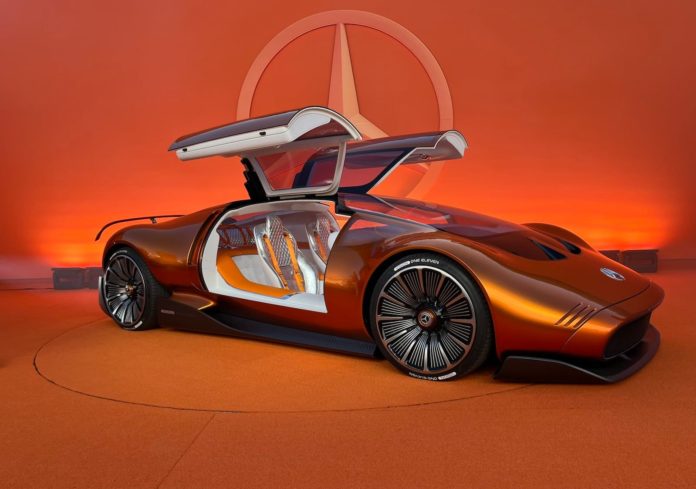As Mercedes-Benz pushes relentlessly upmarket, the German automaker divulged its future direction in the form of the Mercedes-Benz Vision One-Eleven concept car, a modern, reinterpretation of the 1969 Mercedes-Benz C 111 concept car.
Revealed to the media on Tuesday at the company’s International Design Center in Carlsbad, California, the Vision One-Eleven is just part of the brand’s revised approach to more aggressively tackle the top end of the luxury market.
It’s a strategy best summarized by the strikingly bold Vision One-Eleven, a two-door, two-seat battery-electric vehicle.
The new Vision One-Eleven is inspired by the C 111 concept car from 1969, but it’s far from a retro-style copy. Both are low slung, have wide door sills and gullwing doors like the very first Mercedes-Benz SL. There’s even fitted luggage, seat-belted in pace but wearing a quilted diamond pattern. Yet while the new car reinterprets some of the old C-111’s styling cues, elsewhere, the Vision One-Eleven’s modern design details differentiate the car from its predecessor.
Both are bright orange.
But the new car’s orange and white interior is a bold, bright departure from the original car’s dark cabin. Its shape, form language and overall ambience are a loud departure from the quiet, carefully drawn cars that have been the brand’s mainstay for decades. But increasingly, Mercedes-Benz vehicles are anything but that, particularly at the upper end of the line, where its AMG and Maybach vehicles have a far more assertive, aggressive appearance.
It’s emblematic of the brand’s California design studio, where Gordon Wagener, Chief Design Officer for Mercedes-Benz Group AG, spends more and more of his time.
A wild new vision
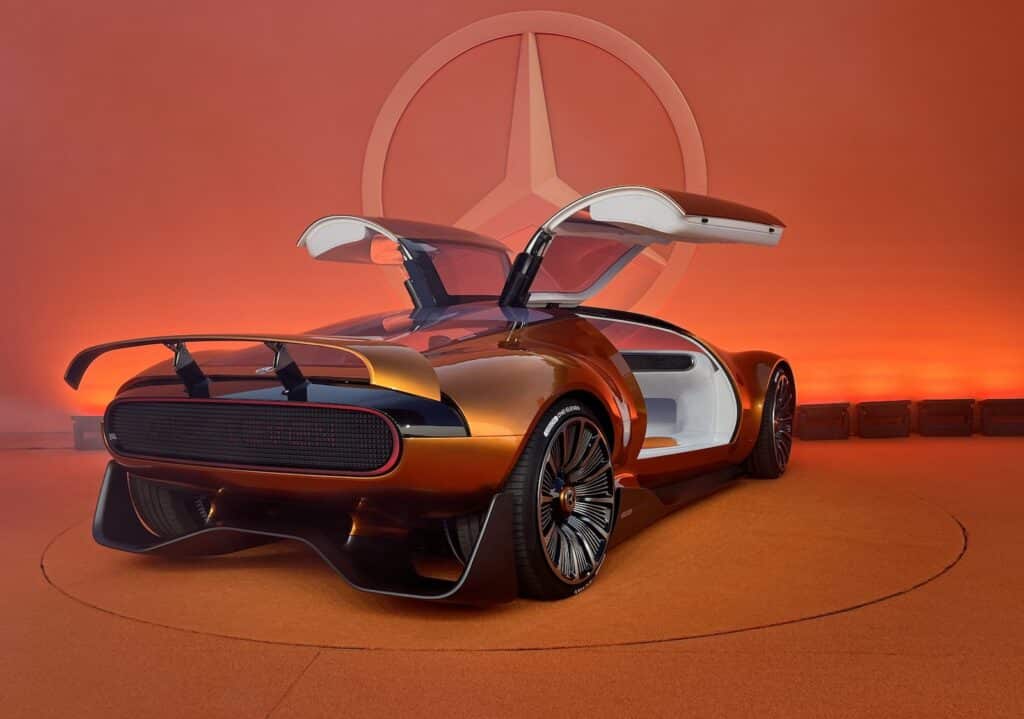
Certainly, the Vision One-Eleven’s appearance is proof. It initially seems simple, but then reveals layer upon layer of carefully crafted design the longer you look at it.
The new car’s instrument features a rough pixel texture, mirrored on the exterior front and rear, which lends the information displayed a bold new look. The steering wheel houses a majority of the controls that you can see. What you won’t see are the sorts of things you’d expect, like an instrument cluster. Instead, the brand’s designers and engineers envision using an augmented reality user interface in place of standard controls.
The augmented reality would not be opaque, like traditional virtual reality. Instead, the driver can see through the graphics that augmented reality puts in place. So, for instance, the vehicle’s speed would be displayed as a giant number on the windshield, not unlike today’s head-up displays. But Mercedes’ AR goes farther, superimposing a giant see-through arrow on the street corner where the navigation system suggests you turn, for example. At the same time, a small map hovers above the center console, showing your overall route. Buttons are similarly AR, and placed where they’re needed, not physically attached to an instrument panel, and actuated using haptic feedback.
Certainly, this vision is fairly far out, and leads to many questions as to the viability of its implementation. But the possibility will certainly lead to a reimagining of automotive interiors and they’re functionality.
Another key component
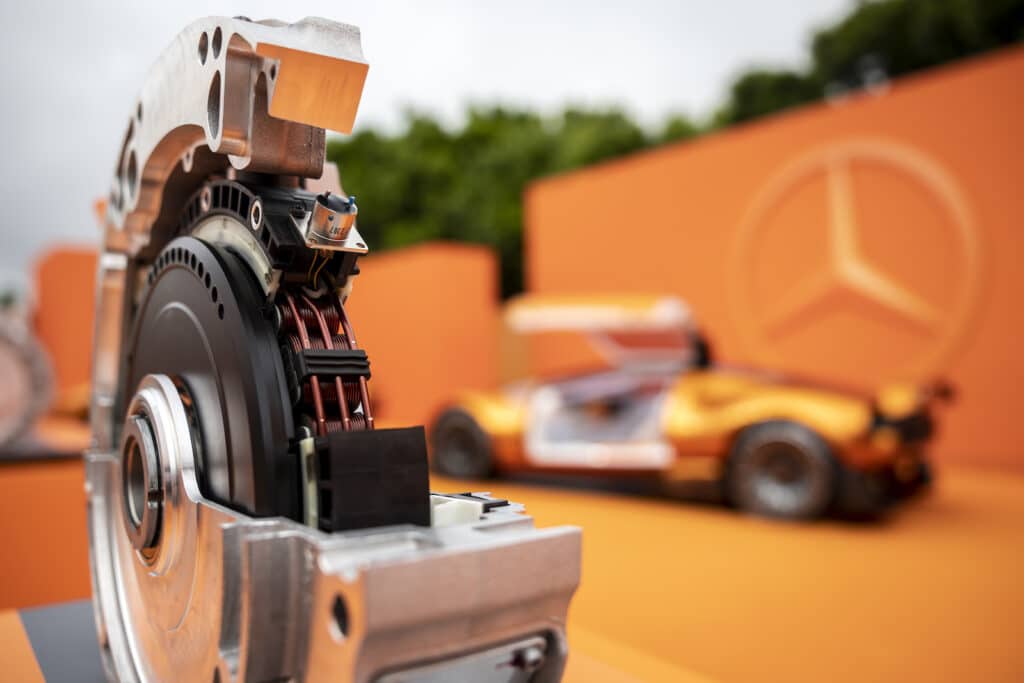
A little closer to home are the car’s axial-flux electric motors, increasingly used in Mercedes-Benz EVs, and the fruition of its purchase of the U.K.-based electric motor start-up Yasa Motors two years ago. Now a fully-owned subsidiary of Mercedes-Benz, the company continues to supply its electric motors to other automakers, such as Ferrari. The company hopes that Yasa motors will become as ubiquitous as Intel chips are in personal computers.
The uniqueness of Yasa’s electric motors lay in its design, an axial-flux motor, invented in 1821 by Michael Faraday, and used in items like disc drives and other specific applications, but not used widely due to its complicated manufacturing and difficulty to cool. Yasa has been able to overcome these obstacles, while taking advantage of the Axial-flux motor’s key advantages, namely, its higher torque density and smaller size and weight when compared to traditional electric motors.
It’s just part of the brand’s overall attempt to be a vertically-integrated EV manufacturer, building its own batteries, motors, software along with everything that’s a key part of EV manufacturing, according to the company’s Chief Technology Officer Markus Schäfer.
A revised luxury vehicle strategy
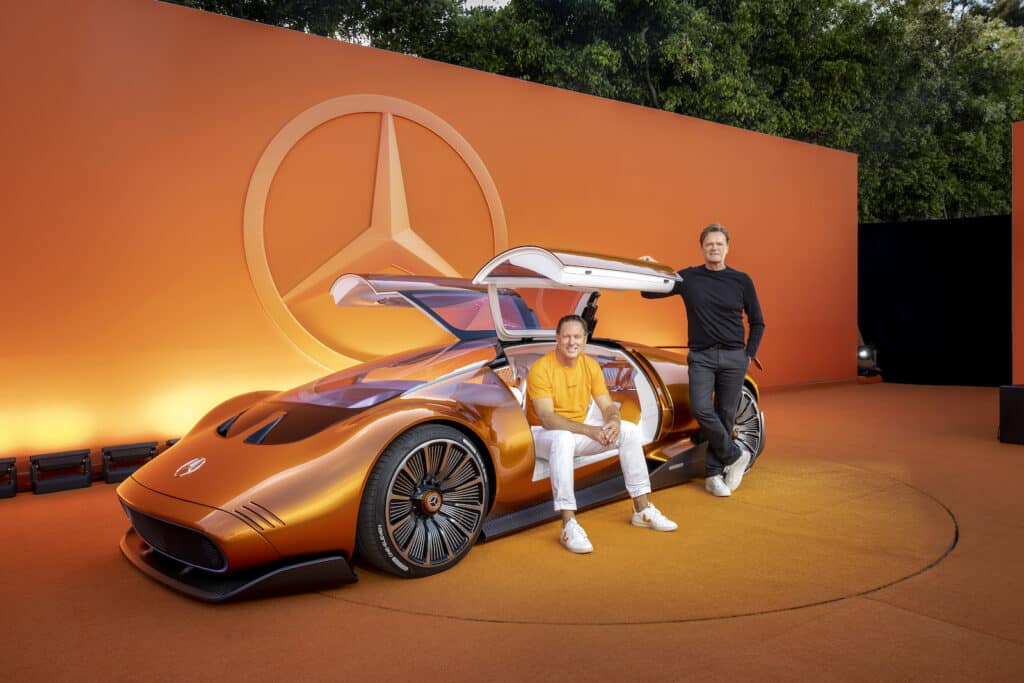
It’s a switch from the past, when the company tackled the luxury vehicle market by flooding the entry-level segment with vehicles like the A-Class, CLA-Class, GLA-Class and GLB-Class. But Schäfer notes that Mercedes-Benz has thinned the herd at the bottom of its lineup, where profits are thinnest, opting to expand options at the top end of the market, where margins are far fatter.
To that end, the company is promising to expand its customization options, while offering more one-offs and collaborations, as well as limited collector’s and special edition vehicles. It’s all an effort by the company to become what it terms, the “Pinnacle of Exclusivity,” aka a luxury car rival to such ultra-high-end automakers such as BMW Group’s Rolls-Royce and Volkswagen Group’s Bentley.
While most of Mercedes-Benz’s plans seem unsurprising, it’s the expansion of customization in particular that should help Mercedes’ luxury star rise higher in the sky. The program, dubbed Manufaktur, offers buyers new customization options from one-off design collaborations to limited collector’s and special editions, to extensive personalization that would go so far as to personalize the buyer’s infotainment screen, perhaps with something as personal as a family crest on the touchscreen’s wallpaper. The company foresees offering the Manufaktur program on its high-end vehicles.
Collaborations and brand extensions
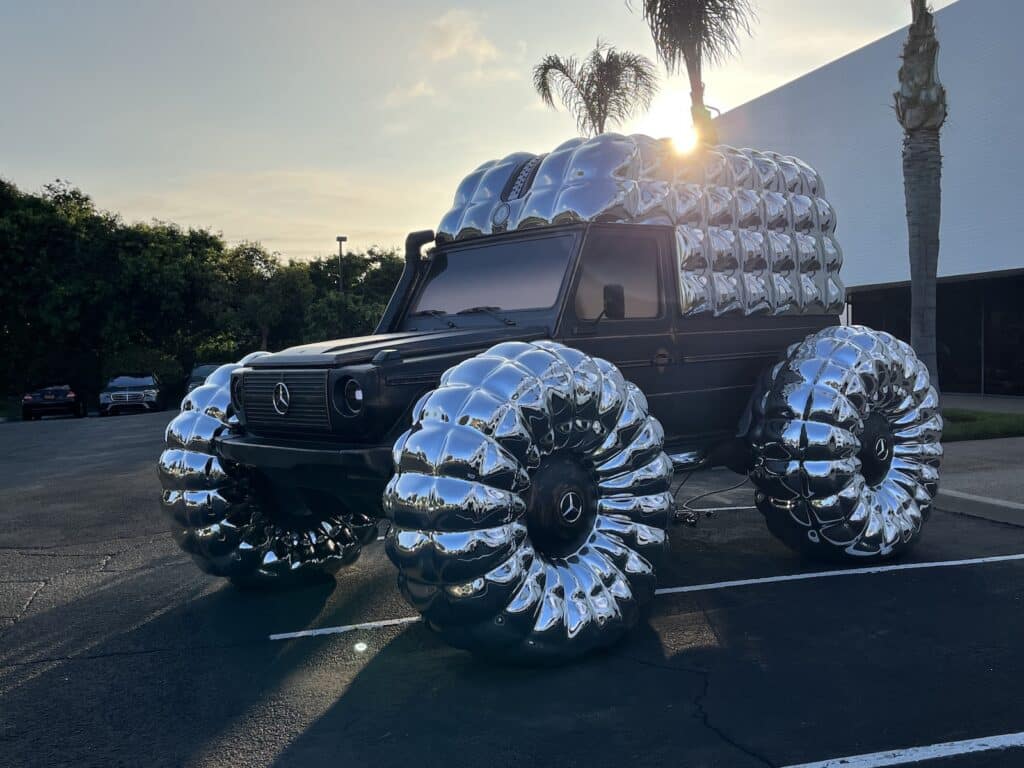
Then, there are the new collaborations, hardly a first in the auto industry, especially among the brand’s competitors, be it Porsche sunglasses, a Bentley chair or timepiece, or even a Bugatti-branded residence. And while Mercedes-Benz has long offered lifestyle accessories, the automaker is seriously ramping up its partnerships.
It joined with clothing retailer Moncler to amalgamate a Mercedes-Benz G-Class with a Moncler puffer jacket. More interestingly Mercedes-Benz is collaborating with artist Harm van den Dorpel to launch the automaker’s first collection of NFTs. The new collection, “Limited Edition 1 of 111” can be kept in your car’s hyperscreen as a high-tech extension of the Mercedes-Benz brand.
To Wagener and Schäfer, technology is luxury, one that Wagener sees Mercedes-Benz design as looking to furnish as it looks to place itself alongside other automakers whose brand extensions has placed them, along with their vehicles, at the peak of luxury automobile manufacturers.
It all adds up to an aggressive new push as Mercedes-Benz reasserts itself as the pinnacle of luxury car brands.

